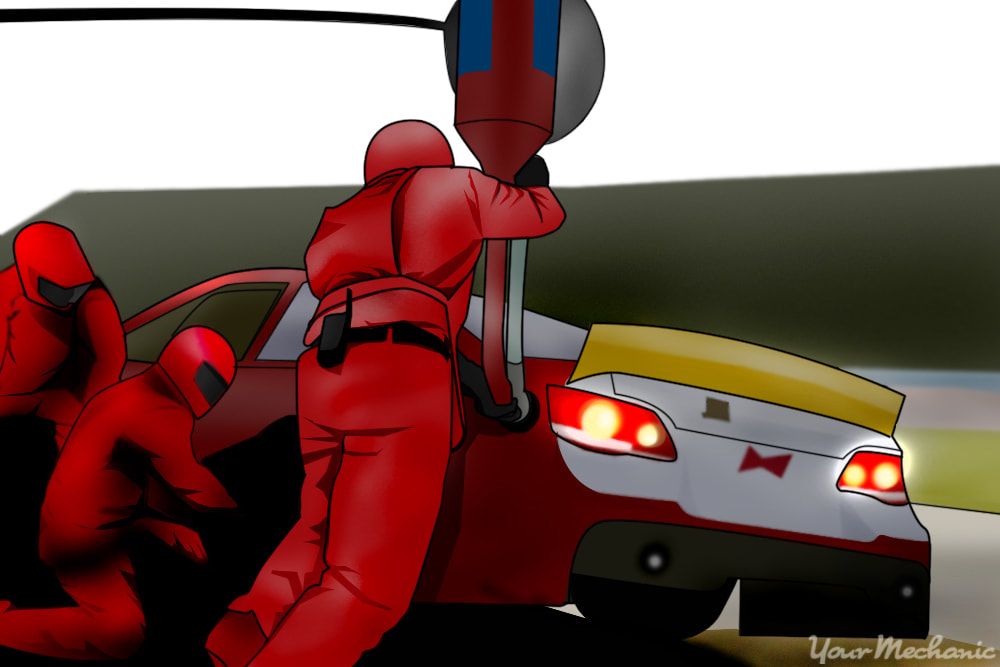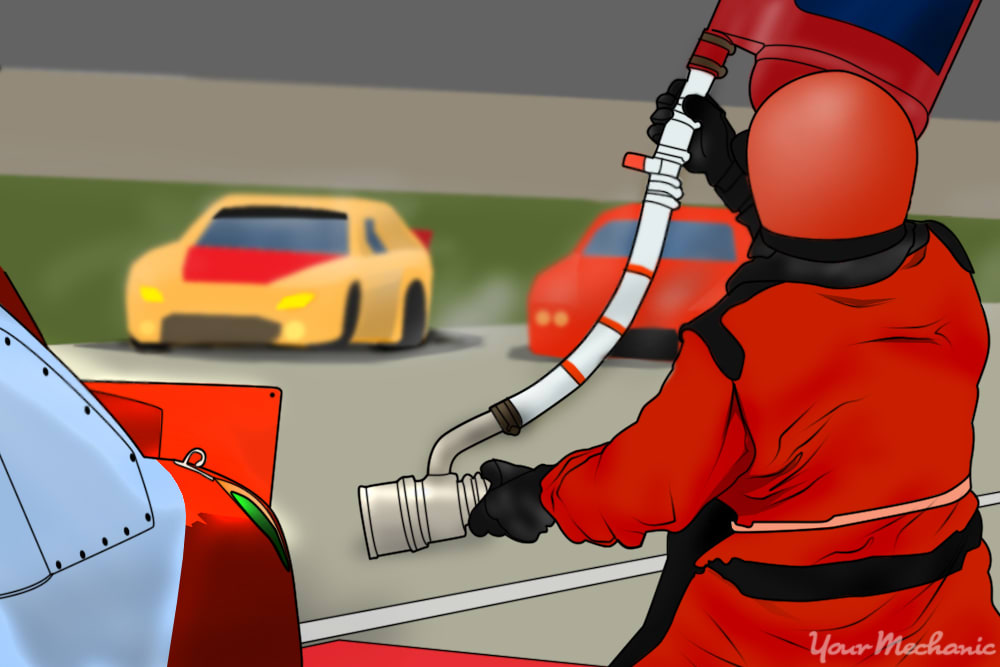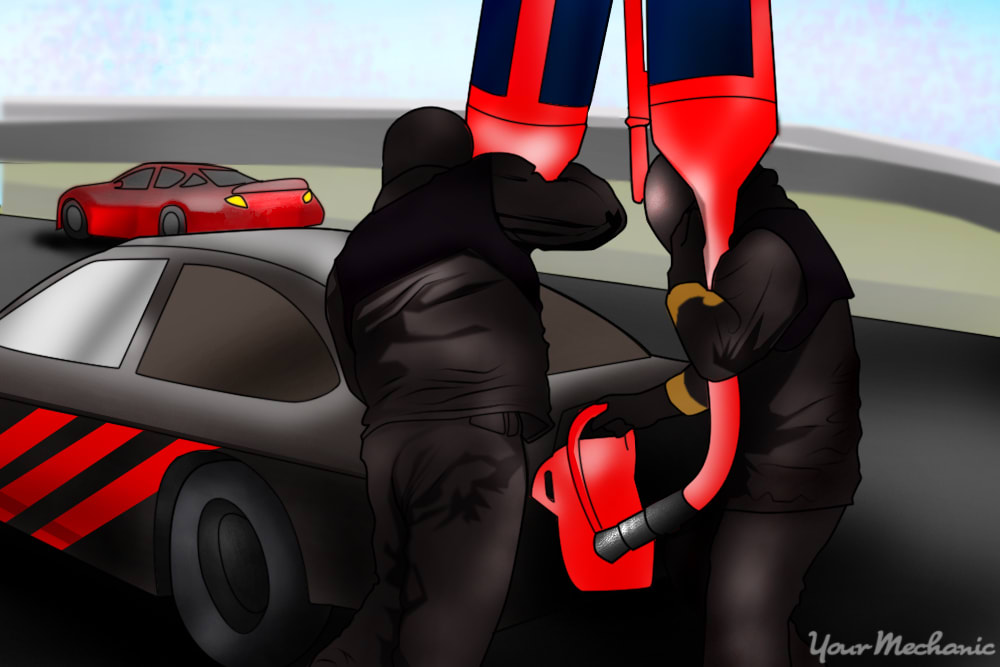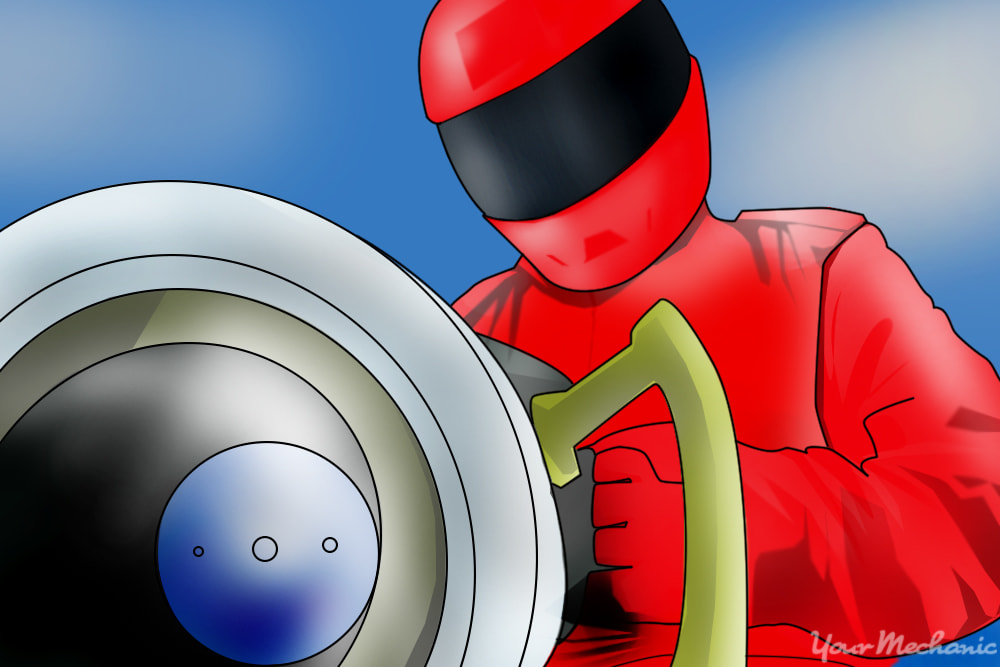

Refueling a race car is a tricky and sometimes dangerous business. For the most part, the vehicle is refueled during pit stops lasting 15 seconds or less. This gives little room for error and requires the use of specialized equipment designed to make fueling a race car quick, safe, and efficient. As of the 2010 racing season, refueling is no longer allowed during a Formula 1 race, though Indycar and the National Association for Stock Car Auto Racing (NASCAR) do allow refueling during their competitive races.
Method 1 of 2: Refueling the NASCAR way
Materials Needed
- Fire-protective clothing
- Fuel can
- Fuel catch can
NASCAR uses a fuel can type known as a dump can to refuel its vehicles on a pit stop. The dump can is designed to release the fuel it holds into the vehicle within eight seconds. Each fuel can holds 11 gallons, so it takes two full cans to completely refuel a car. Weighing up to 95 pounds when full, the crew member who handles refueling needs a large amount of strength to lift the can into place.
Another crewmember, called the catch can man, makes sure the catch can is in place to capture any excess fuel and keep it from spilling out during the refueling process. All of this usually takes place in 15 seconds or less, meaning everybody needs to do their job correctly in as fast and safe a manner as possible to avoid any pit road penalties and to get the car back out on the track.
Step 1: Using the first can of fuel. As the driver pulls into the pit stall and comes to a stop, the crew rushes over the wall to service the car.
The gasman, with the first can of fuel, approaches the vehicle and connects the fuel can to the vehicle via the fuel port on the left rear of the car. The catch can man also positions the catch can under the overflow nozzle to capture any overflowing fuel.
In the meantime, the tire crew is replacing the wheels on the right side of the car.

Step 2: Using the second can of fuel. As the tire crew finishes replacing the right side tires, the gasman returns the first can of fuel and receives the second can of fuel.
As the crew changes the left side tires, the gasman empties the second can of fuel into the car. In addition, the catch can man maintains his position with the catch can until the refueling process is complete. If the car is getting right side tires only, then the gasman only puts one can of fuel in the car.
Step 3: Completing the refuel. It is only after the gasman has finished refueling that he signals the jack man who lowers the car, allowing the driver to reenter the race.
It is important that the catch can man and the gasman remove all refueling equipment before the driver leaves the pit stall. Otherwise, the driver has to come in for a pit road penalty.
Method 2 of 2: Refueling the Indycar way
Materials Needed
- Fire-protective gear
- Fuel hose
Unlike a NASCAR pit stop, an Indycar is not refueled until after the crew has replaced all of the tires. This is a safety issue, and since all drivers must follow this procedure, it does not give anyone an unfair advantage. In addition, filling up an Indycar fuel cell is a much quicker process, taking only about 2.5 seconds at most.
Also, unlike a NASCAR pit stop, the Indycar crewman who handles refueling, called a fueler, does not use a gas can, but instead connects a fuel hose into the port on the side of the car to allow fuel to flow into the car.
Step 1: Preparing for the refuel. The pit crew changes tires and makes any necessary adjustments to the car.
This allows the pit crew to safely do their job without the added risk of refueling. The fueler prepares to come across the wall with the fuel hose once everything else is complete.
Step 2: Refueling the car. The fueler fits the specially designed nozzle into the port in the side of the race car.
Meanwhile, the fuel hose assistant, also known as the deadman, operates a spring-loaded lever on the fuel tank. If any problems are detected, they release the lever, stopping the release of fuel.
In addition to controlling the flow of fuel, the fuel hose assistant also helps the fueler keep the fuel hose level to facilitate the faster release of fuel. The fuel hose assistant does not go over the pit wall.
Step 3: After the refuel. Once the refueling process is over, the fueler releases the fuel hose and takes it back over the pit wall.
It is only after all equipment is clear that the chief mechanic signals that it is okay for the driver to leave the pit area and reenter the track.
Each second counts during a race, and being able to complete a pit stop quickly and safely is important. This includes wearing the proper safety gear, using the equipment the way it was intended, and making sure that all crew members remain out of harm's way throughout the whole process. If you have any questions about fueling a race car, or any type of vehicle, Ask a Mechanic to learn more.







